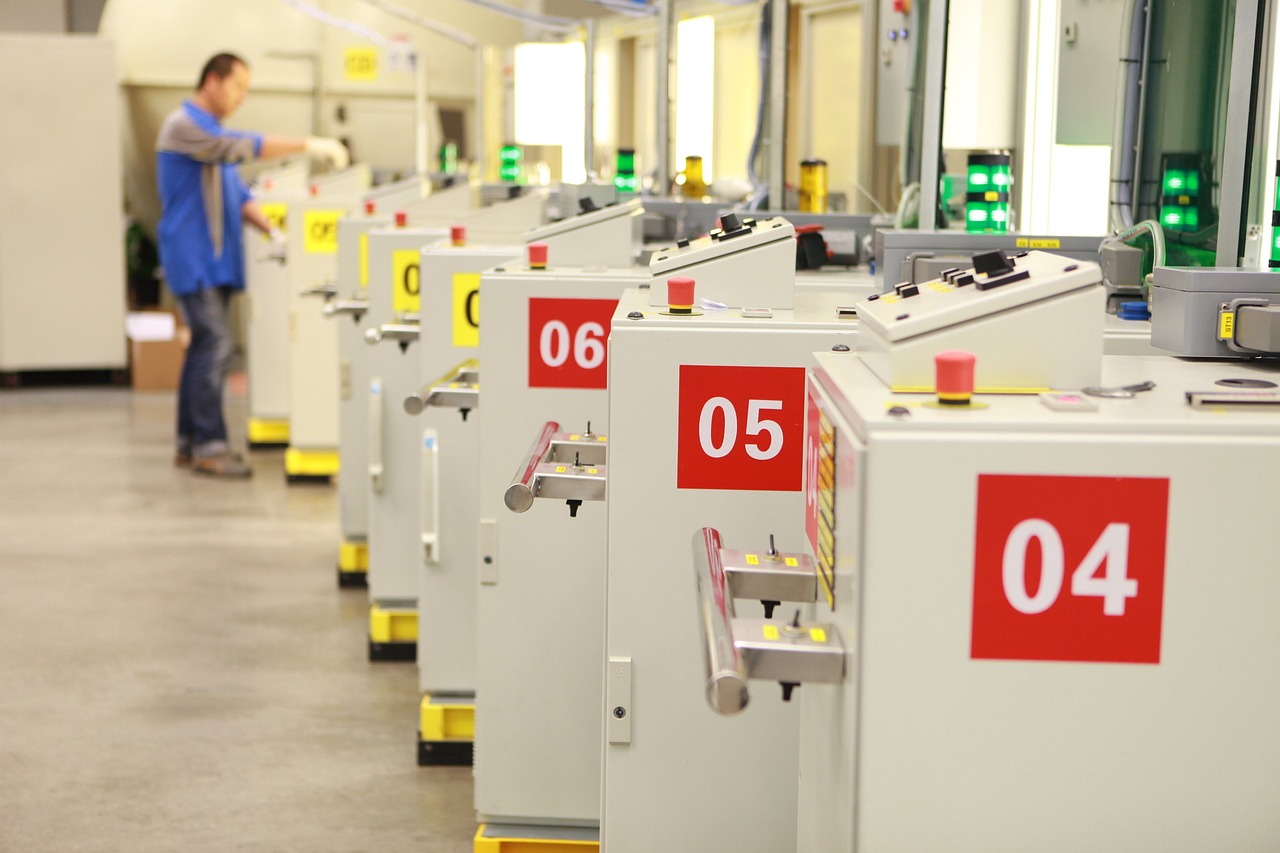The Great Migration: How Southeast Asia is Reshaping Global Manufacturing

The global manufacturing landscape has experienced significant changes over the past few decades. A notable trend involves the manufacturing industry shifting to Southeast Asia. This shift carries substantial implications for global trade and the economy.
Southeast Asia has become an attractive destination for manufacturing due to several factors. For instance, foreign direct investments into ASEAN economies rose to $236 billion in 2023. Vietnam, a key player in the region, saw electronics make up 38% of its exports in 2020. The Philippines also reported a 4.5% year-on-year growth in manufacturing production in Q1 2024. These developments highlight Southeast Asia's growing importance in the global manufacturing sector.
Reasons for the Manufacturing Industry Shifting to Southeast Asia

Cost Advantages
Lower Labor Costs
Southeast Asia offers significantly lower labor costs compared to other regions. Countries like Vietnam and Indonesia provide competitive wages, making them attractive destinations for manufacturing. Companies can reduce production costs by relocating operations to these countries. For example, Vietnam has become a preferred destination due to its cost-effective labor market.
Affordable Raw Materials
The availability of affordable raw materials in Southeast Asia further enhances its appeal. The region's rich natural resources contribute to lower production costs. Manufacturers benefit from reduced expenses on essential inputs. This cost advantage makes Southeast Asia a viable option for various industries, including electronics and textiles.
Strategic Location
Proximity to Major Markets
Southeast Asia's strategic location offers proximity to major markets such as China, India, and Japan. This geographical advantage facilitates easier access to a large consumer base. Companies can efficiently distribute products to these markets, reducing transportation time and costs. The region's central position in Asia enhances its attractiveness for global manufacturers.
Access to Shipping Routes
Southeast Asia provides excellent access to key shipping routes. Major ports in countries like Singapore and Malaysia serve as vital hubs for international trade. These ports offer efficient logistics and connectivity to global markets. Manufacturers benefit from streamlined supply chains and reduced shipping costs. The region's robust maritime infrastructure supports the seamless movement of goods.
Government Policies
Incentives and Subsidies
Governments in Southeast Asia actively promote foreign investment through various incentives and subsidies. Countries like Thailand and Malaysia offer tax breaks, grants, and other financial benefits to attract manufacturers. These policies create a favorable business environment, encouraging companies to establish operations in the region. The supportive government stance boosts the manufacturing industry's growth.
Trade Agreements
Southeast Asia has established numerous trade agreements that facilitate international commerce. Agreements such as the ASEAN Free Trade Area (AFTA) reduce tariffs and trade barriers among member countries. These agreements enhance market access and encourage cross-border trade. Manufacturers benefit from reduced costs and increased competitiveness. The region's commitment to trade liberalization strengthens its position in the global manufacturing landscape.
Key Countries in Southeast Asia

Vietnam
Economic Growth
Vietnam has experienced remarkable economic growth over the past decade. The country's GDP grew by 7.1% in 2023, driven by robust manufacturing and export activities. Investments in human capital and infrastructure have played a crucial role in this growth. For instance, Vietnam attracted $6.2 billion of foreign direct investment (FDI) in the first quarter of 2024. This influx of FDI has transformed Vietnam into a hub for foreign investment and manufacturing in Southeast Asia.
Investment in Infrastructure
Vietnam's government has prioritized infrastructure development to support the manufacturing industry. Significant investments have been made in transportation networks, including highways, ports, and railways. The construction of new industrial parks and special economic zones has also facilitated manufacturing activities. These infrastructure improvements have enhanced Vietnam's attractiveness as a manufacturing destination.
Thailand
Skilled Workforce
Thailand boasts a highly skilled workforce, which is a significant asset for the manufacturing industry. The country has invested heavily in education and vocational training programs. These initiatives have produced a labor force proficient in various technical skills. Thailand's skilled workers contribute to higher productivity and quality in manufacturing processes.
Technological Advancements
Thailand has embraced technological advancements to boost its manufacturing sector. The government has promoted the adoption of Industry 4.0 technologies, such as automation and artificial intelligence. These innovations have improved efficiency and reduced production costs. Thailand's commitment to technological progress positions it as a competitive player in the global manufacturing landscape.
Malaysia
Business-Friendly Environment
Malaysia offers a business-friendly environment that attracts foreign manufacturers. The country has streamlined regulations and procedures to facilitate business operations. Incentives such as tax breaks and grants further enhance Malaysia's appeal. The government's pro-business policies create a conducive atmosphere for manufacturing activities.
Diversified Economy
Malaysia's diversified economy provides a stable foundation for the manufacturing industry. The country has a well-developed financial sector, robust infrastructure, and a strong services industry. This economic diversity reduces vulnerability to external shocks and supports sustainable growth. Malaysia's diversified economy makes it an attractive destination for manufacturers seeking stability and resilience.
Indonesia
Large Domestic Market
Indonesia boasts a large domestic market, making it an attractive destination for the manufacturing industry shifting to Southeast Asia. The country has a population exceeding 270 million people. This vast consumer base provides significant opportunities for manufacturers. Companies can tap into this market to drive sales and growth. The increasing purchasing power of Indonesian consumers further enhances the market's potential. Manufacturers benefit from strong local demand, reducing reliance on exports.
Natural Resources
Indonesia's abundant natural resources play a crucial role in attracting the manufacturing industry shifting to Southeast Asia. The country possesses vast reserves of minerals, oil, and gas. These resources provide essential raw materials for various industries. Manufacturers can source these materials locally, reducing import costs. Indonesia's rich natural resources contribute to lower production expenses, making it a competitive manufacturing hub. The availability of these resources supports diverse manufacturing sectors, including electronics, automotive, and textiles.
Opportunities and Challenges
Opportunities
Market Expansion
Southeast Asia presents significant opportunities for market expansion. The region will add approximately 140 million new consumers by 2030. This growth offers manufacturers a vast, untapped consumer base. Companies can leverage this expanding market to drive sales and increase revenue. The rising purchasing power of consumers in countries like Indonesia and Vietnam further enhances market potential. Manufacturers can capitalize on this trend to establish a strong presence in the region.
Innovation and Development
Southeast Asia's focus on innovation and development creates a fertile ground for technological advancements. Governments in the region invest heavily in research and development (R&D). For instance, Thailand promotes Industry 4.0 technologies such as automation and artificial intelligence. These investments lead to increased productivity and efficiency in manufacturing processes. Companies can benefit from a supportive environment that fosters innovation. The region's commitment to technological progress positions it as a hub for cutting-edge manufacturing solutions.
Challenges
Political Instability
Political instability poses a significant challenge for the manufacturing industry in Southeast Asia. Countries in the region experience varying degrees of political uncertainty. For example, changes in government policies can affect business operations. Companies must navigate complex regulatory environments and potential disruptions. Political instability can lead to delays in project implementation and increased operational risks. Manufacturers need to develop strategies to mitigate these challenges and ensure business continuity.
Environmental Concerns
Environmental concerns present another challenge for the manufacturing sector in Southeast Asia. Rapid industrialization has led to environmental degradation in some areas. Issues such as pollution and resource depletion require immediate attention. Governments in the region are implementing stricter environmental regulations. Companies must comply with these regulations to avoid penalties and reputational damage. Sustainable practices and green technologies become essential for long-term success. Manufacturers need to adopt eco-friendly approaches to address environmental concerns and contribute to sustainable development.
Impact on Global Economy
Supply Chain Dynamics
Changes in Global Supply Chains
The shift of manufacturing to Southeast Asia has significantly altered global supply chains. Companies have diversified their production bases to reduce dependency on a single region. This diversification enhances resilience against disruptions like trade wars or pandemics. Southeast Asia's strategic location facilitates efficient logistics and distribution networks. The region's proximity to major markets ensures timely delivery of goods.
Impact on Other Manufacturing Hubs
The rise of Southeast Asia as a manufacturing hub has impacted other regions. China, once the dominant player, faces increased competition. Rising labor costs in China have driven companies to seek more cost-effective alternatives. Southeast Asia's competitive advantages attract businesses looking for lower production expenses. Other manufacturing hubs must adapt to maintain their market positions.
Economic Growth
Contribution to Regional GDP
Manufacturing growth in Southeast Asia contributes significantly to regional GDP. Countries like Vietnam and Thailand have seen substantial economic benefits. Vietnam's manufacturing sector accounted for 16% of its GDP in 2023. Thailand's industrial production index rose by 5.2% in the same year. These contributions drive overall economic development and prosperity.
Job Creation
The manufacturing boom in Southeast Asia has led to job creation across the region. New factories and production facilities generate employment opportunities. Vietnam's manufacturing sector employed over 10 million people in 2023. Indonesia's manufacturing industry created 1.5 million jobs in the same year. Job creation boosts local economies and improves living standards for workers.
The shift of manufacturing to Southeast Asia stems from several key factors. Lower labor costs, affordable raw materials, strategic location, and supportive government policies drive this transition. Southeast Asia's rise as a manufacturing hub impacts global supply chains and economic growth. The region's strategic location and competitive advantages attract businesses seeking cost-effective alternatives.
Long-term effects on the global economy include diversified supply chains and increased competition for traditional manufacturing hubs like China. Future trends indicate continued investment in infrastructure, innovation, and sustainable practices. Southeast Asia's manufacturing sector will likely see further growth and development, solidifying its position in the global market.
See Also
Efficiently Navigating High-Tech Manufacturing Logistics for Success
Simplified Approaches to High-Tech Manufacturing's Supply Chain Challenges
Discovering Robotics Innovation: Supply Chain Transformation
The Path to High-Tech Manufacturing Success: Essential Strategies
Unlocking High-Tech Manufacturing Consulting for Achieving Success
